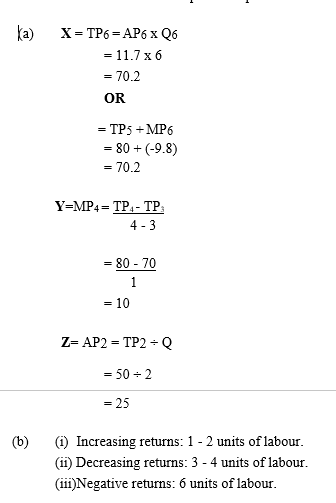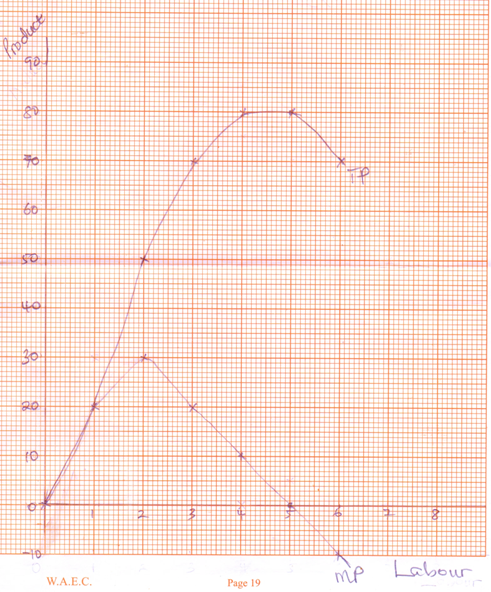Question 1
The table below shows the number of workers engaged by an agricultural firm over a period of time. Study it and answer the questions that follow.
Number of workers |
Total Product |
Marginal Product |
Average Product |
0 |
0 |
0 |
0 |
(a) Calculate the values of X, Y and Z.
(b At what level of employment of labour does the firm experience:
(i) increasing returns;
(ii)decreasing returns;
(iii) negative returns?
(c) State the law of diminishing returns.
(d) (i) On a graph sheet, draw the total product and marginal product curves.
(ii) State any two relationships between the two curves in (d)(i) above.
The candidates were expected to provide the following answers to score higher marks.

(c) The law of diminishing returns states that as more and more units of a variable factor are combined with a fixed input, the marginal product increases and after a certain point begins to decline.

(ii) From the graph, as the variable input labour increases, both TP and MP increase, i.e. up to 2 units of labour. At 3 units of labour, TP still increases, but MP attains a maximum of 30 and begins to fall. As MP falls up to 5 units of labour, TP has reached its maximum at 80. When MP turns negative, TP begins to fall to 70.2.
